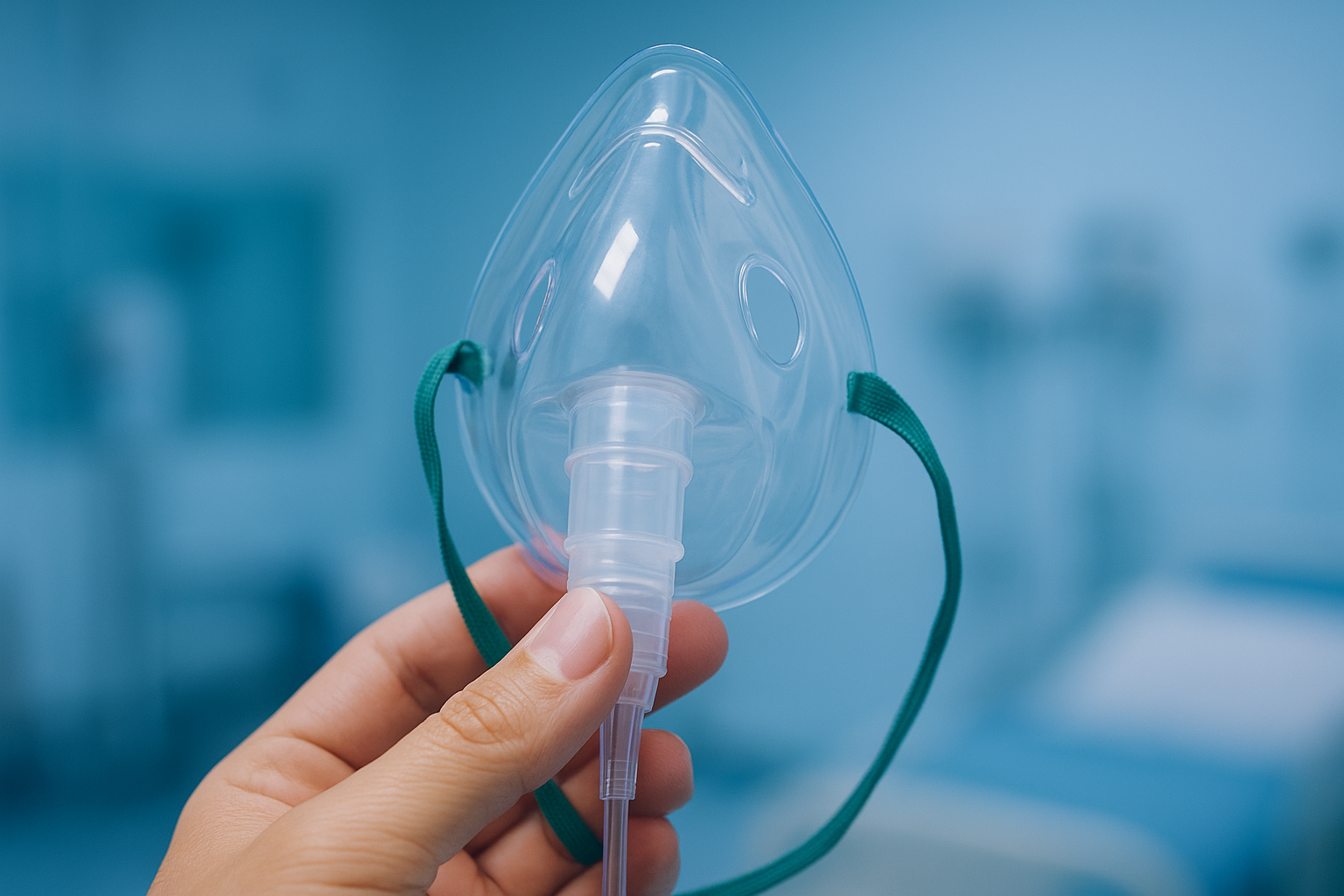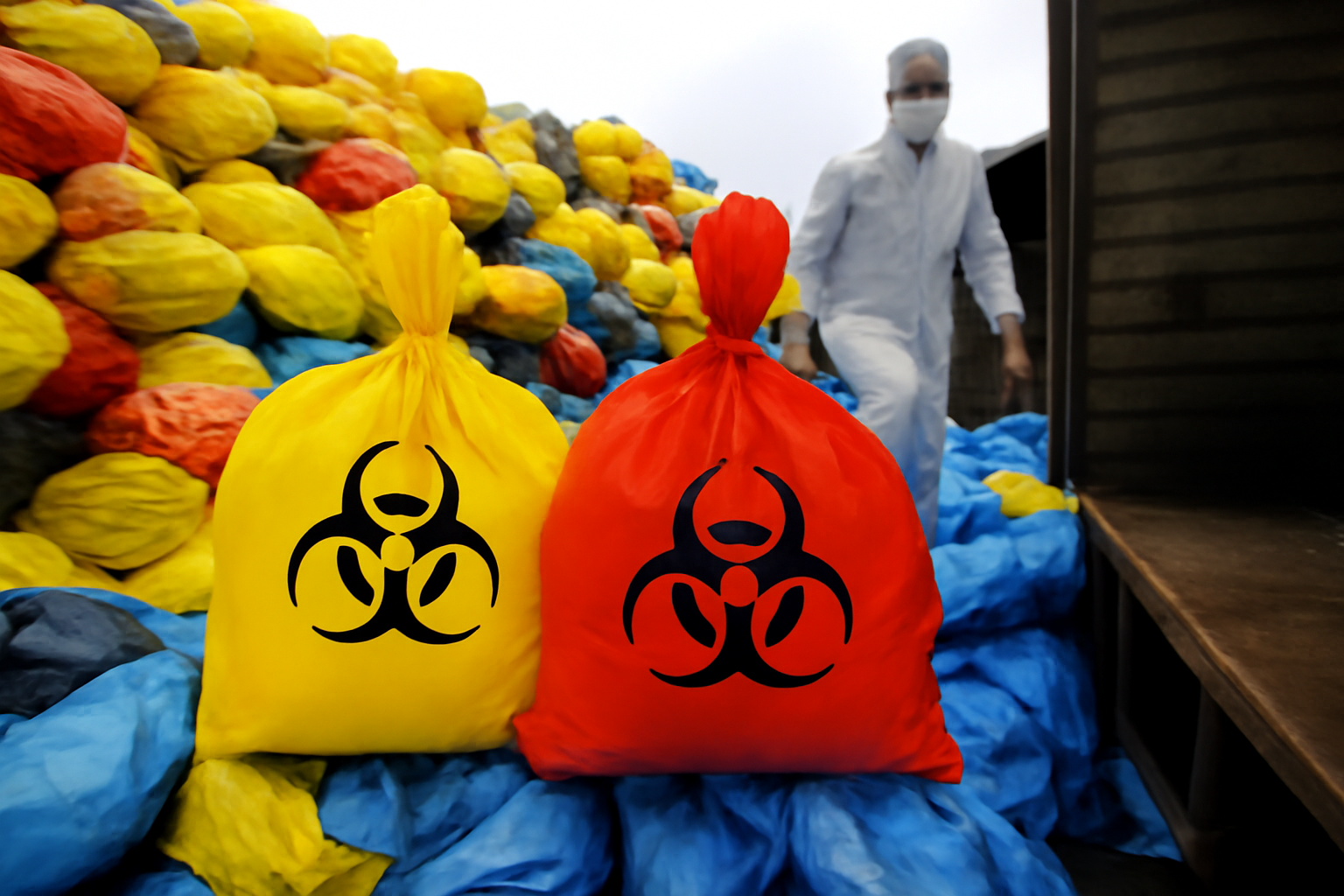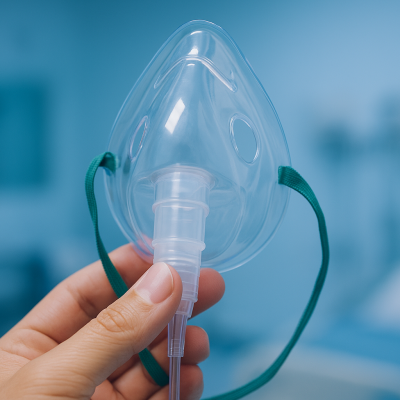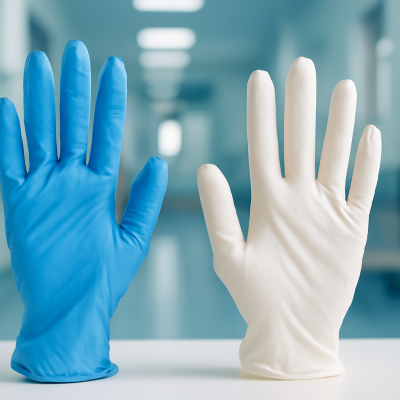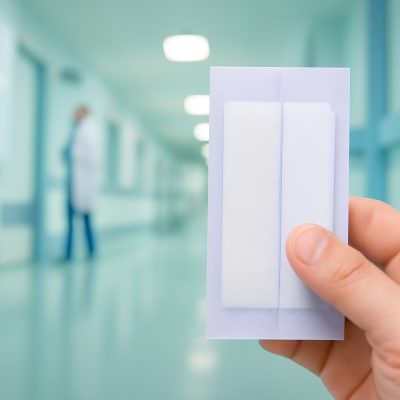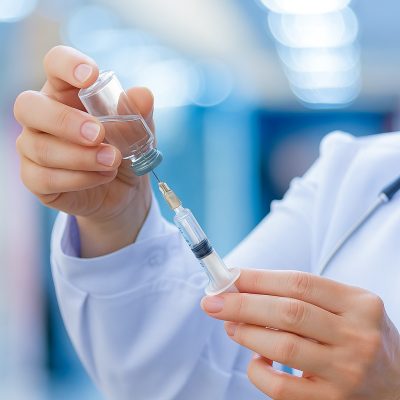Oxygen masks are essential medical tools that help patients receive supplemental oxygen when they cannot breathe adequately on their own. Understanding different types of oxygen masks helps patients, caregivers, and healthcare professionals choose the most effective type for each situation.
What Are Oxygen Masks?
Oxygen masks supply extra oxygen to help people breathe when their bodies can’t get enough from the air, usually patients with lung problems. They connect to an oxygen source, such as a tank or concentrator, and cover the nose and mouth to deliver oxygen directly into the lungs. These masks are commonly used in hospitals, at home, or during emergencies.
Types of Oxygen Masks
Nasal Cannula
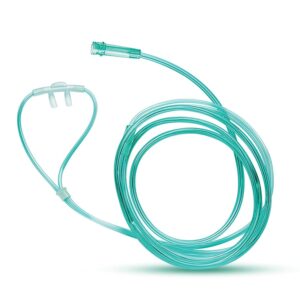
The nasal cannula is one of the simplest and most comfortable oxygen delivery masks. It consists of two small prongs that fit into the nostrils and provide low-flow oxygen (about 1–6 L/min, roughly 24–44% oxygen). Since it does not cover the entire face, patients can still speak or move around freely. It is ideal for long-term home oxygen therapy in chronic lung conditions, like COPD.
Simple Face Mask
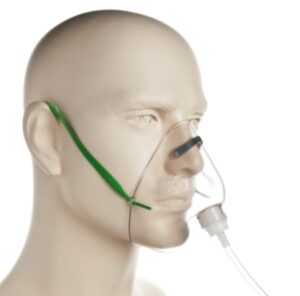
A simple mask covers both the nose and mouth and is secured with an elastic strap around the head. It provides moderate oxygen (~35–50% at 6–10 L/min), a higher oxygen level than a cannula. However, patients must remove the mask to eat or talk, which can feel confining. Therefore, it is used only for short-term support.
Venturi Mask
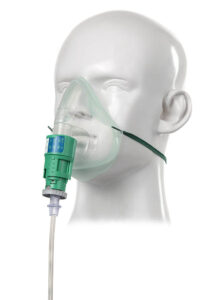
The Venturi mask, also known as an air-entrainment mask, has a special valve that mixes oxygen with room air. This feature provides very precise and consistent oxygen control, allowing healthcare providers to deliver exact concentrations anywhere from 24% to 60%. Venturi masks are especially helpful for people with COPD or in situations where controlling oxygen levels is vital.
Non-Rebreather Mask
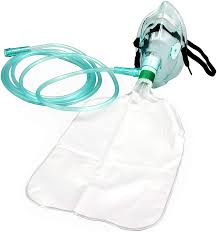
A non-rebreather mask is designed for situations where patients need very high oxygen levels. It consists of a facepiece and an attached reservoir bag that fills with pure oxygen. One-way valves prevent exhaled air from entering the bag, so the patient inhales almost 100% oxygen. Non-rebreathers can deliver very high oxygen concentrations (about 60–90%) at 10–15 L/min and are commonly used in emergencies or critical care when the body needs a rapid oxygen boost without intubation.
Partial Rebreather Mask
A partial rebreather mask is similar to a non-rebreather but without one-way valves on the bag. Because of this, exhaled air mixes with fresh oxygen. Partial rebreathers provide high oxygen (around 50–70%) at 8–15 L/min. By reusing part of the patient’s oxygen-rich exhaled air, it conserves oxygen while maintaining enough carbon dioxide to help stimulate natural breathing.
Face Tent
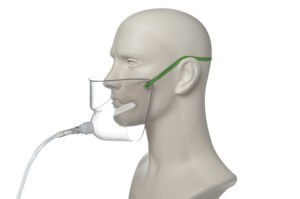
A face tent is a loose-fitting mask that covers the nose and mouth. It is used for people who feel claustrophobic wearing tight masks or for those recovering from facial surgery or injury, allowing humidified oxygen when needed. This mask delivers roughly 40–60% oxygen at 10–15 L/min. While not as precise as other masks, it provides a comfortable option for longer use.
Nebulizer Mask
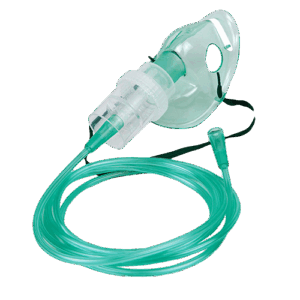
Nebulizer masks are often used for patients who need to inhale medications in mist form, such as during an asthma attack. The mask turns liquid medicine into a fine spray that mixes with oxygen or air, allowing easy breathing into the lungs. This type of mask helps deliver medication directly to the airways for fast relief.
Bag-Valve Mask (BVM)
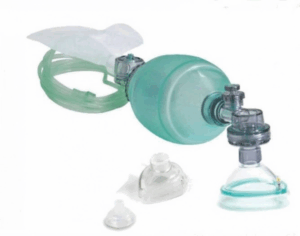
Bag-valve masks (BVMs) are single-use, disposable devices typically used for people who cannot breathe properly on their own. The mask attaches to a self-inflating bag that rescuers manually squeeze to push oxygen into the lungs. It often has a flexible tube that connects to an oxygen supply for higher concentrations and is commonly used by paramedics and hospital staff during resuscitation efforts. Typically, two people operate a BVM: one maintains the mask seal and keeps the airway open, while the other squeezes the bag to provide ventilation. However, like non-rebreather masks, BVMs can quickly deplete oxygen supplies, making them best suited for short-term use.
How Oxygen Masks Work
For example, one-way valves on a non-rebreather mask force the patient to inhale from the oxygen reservoir, keeping the oxygen concentration very high, while Venturi masks entrain room air through an adapter to deliver a fixed oxygen level. In all masks, oxygen flows from the source into the mask so the patient breathes this enriched air.
How to Use an Oxygen Mask
To use an oxygen mask correctly, follow these steps:
- Turn on the oxygen source and adjust it to the prescribed flow rate.
- Attach the tube and place the mask over the nose and mouth. Make sure the strap fits comfortably. If the mask has a reservoir bag, ensure it inflates as the oxygen flows.
- Check that the mask seals well without air leaks and that the user can breathe comfortably. Adjust the fit or oxygen flow if needed.
- Replace disposable masks and tubing every 2–4 weeks or after illness, and clean reusable masks regularly to prevent infection.
Choosing the Right Oxygen Mask
The optimal mask depends on how much oxygen a person needs, how comfortable they are wearing it, and where it will be used. Generally:
- Use low-flow devices (nasal cannula or simple mask) for routine or home oxygen therapy and mild oxygen needs.
- Use a Venturi mask when a precise oxygen concentration is required (as in COPD).
- Use high-flow devices (non-rebreather or partial rebreather) in emergencies or acute care when high oxygen levels are needed.
- Use a face tent for comfort or facial injuries, as it offers gentle coverage without tight contact.
Overall, the mask should seal well without causing pressure sores or claustrophobia, which helps ensure effective therapy. For the best results, consult a medical professional to determine the most suitable oxygen mask for your specific needs and condition.

